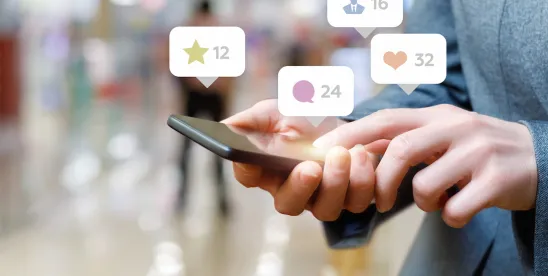As social media continues to grow, businesses have turned to different platforms to promote their products. This advertising strategy can have unintended consequences, including copyright infringement claims, if businesses fail to take certain steps when sharing photos and videos to promote their product.
For example, many multinational music companies have filed lawsuits against brands for copyright infringement. Given the frequency of these claims, businesses may think that infringement and similar intellectual property claims are covered by their liability insurance policies. But that is not always the case.
The most common source of coverage is “Coverage B” in commercial general liability policies, which protects against claims alleging personal and advertising injury. Those claims can include allegations of libel, slander, invasion of privacy, copyright infringement, false arrest, and wrongful eviction. All policies are not created equal, however, and references to advertising or intellectual property rights may not actually lead to coverage for social media missteps involving alleged infringement. As a result, it is important for an insured to understand the coverage afforded under their CGL policies and additional coverage options that may provide broader coverage.
There are several common limitations on coverage that may come into play for claims involving social media.
Problematic Exclusions and Endorsements. In more recent years, insurers have added intellectual property exclusions to CGL policies, which may eliminate coverage for certain risks including copyright infringement claims. Or worse, CGL policies may have endorsements that exclude coverage for personal and advertising injuries altogether.
Moreover, even if a CGL policy provides personal and advertising injury coverage not subject to a broad intellectual property exclusion, coverage for copyright infringement may be unavailable due to other policy provisions. Common CGL language addressing damages, coverage territory, and publication “in your advertisement” all may lead to disputes over availability or scope of coverage.
Seek Specialized Media Liability Coverage. For these reasons, businesses may want to look to other policies to secure the appropriate coverage.
Media liability insurance, for example, is a specialized type of professional liability or errors and omissions insurance focused on covering claims alleging mistakes made in media or advertising. Cyber insurance policies can provide another avenue for coverage, as some policies include media liability insuring agreements that respond to copyright infringement claims. These and other products may protect against lawsuits related to personal and advertising injury that are not covered by Coverage B in the company’s CGL policy.
Carefully Audit All Policies. But even specialized coverages must be analyzed closely to avoid gaps in coverage. One example, media liability coverage, typically extends only to claims arising out of the insured’s “business,” which is usually defined in the policy. If a policyholder agrees to an unduly narrow or incomplete definition of its “business,” it may result in unexpected denials when an infringement or other claim relates to an uninsured aspect of the company’s operations.
Takeaways
Due to risks of overbroad exclusions, narrow definitions, or insuring agreements, and unclear policy language implicated in copyright infringement claims, businesses should not assume that their current insurance program adequately protects against social media exposures.
Working closely with insurance brokers, experienced coverage counsel, and other risk professionals to audit current policies and, if needed, procure additional coverage to protect against risks related to the use of social media and product promotions, can help maximize coverage in the event of a claim.





 />i
/>i

